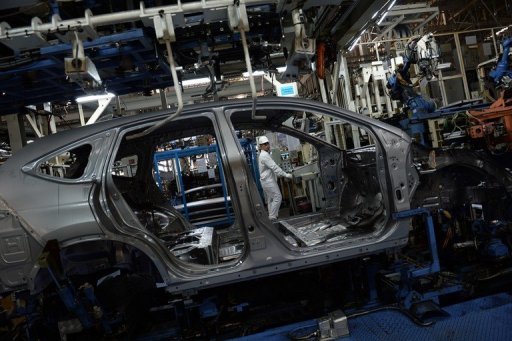AFP
September 8, 2013
At a high-tech factory in the world’s fastest growing auto production hub, industrial robots and white-suited workers put the finishing touches to hundreds of cars rolling off the assembly line each day.
It could be a scene from Toyota City or Detroit, but this is Thailand, a country better known around the world for its beaches and rice paddies.
With major car makers hit by a global economic downturn, the Southeast Asian nation has emerged as a rare bright spot in recent years.
Thailand’s auto production surged 70 percent in 2012 from the previous year, to 2.48 million vehicles, according to the Paris-based International Organization of Motor Vehicle Manufacturers.
In contrast, China and India saw only single digit gains.
Thanks to major investment by Japanese producers as well as US giant Ford, Thailand is Southeast Asia’s most prolific car maker, streets ahead of nearest-rival Indonesia.
Last year it exported about one million vehicles.
Domestic sales also continued to surge in the first six months of 2013, although they have since slowed as the number of first time buyers lured into the market by tax breaks tails off.
It is a general growth trend mirrored across much of the region as people switch to cars from motorcycles.
Despite worries about Thailand’s wider economic fortunes, car makers remain bullish about the kingdom’s long-term prospects and have pumped hundreds of millions of dollars into high-tech new plants to prove it.
“There might be black clouds and there might be problems, but overall the car industry is driven by people… people with two wheels who want to get four wheels,” says Uli Kaiser, president of industry analysts the Automotive Focus Group Thailand.
“I don’t see that desire to stop, and I see Southeast Asia as the strongest growth territory in the world.”
As the battle for market share intensifies, big car makers — many from Japan — are ploughing cash into new plants determined to sell more vehicles to Thailand’s burgeoning consumer classes and take advantage of its location in the heart of Southeast Asia’s export markets.

